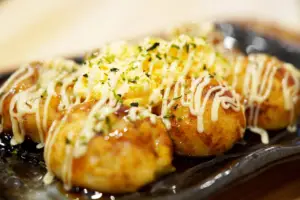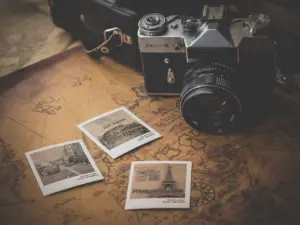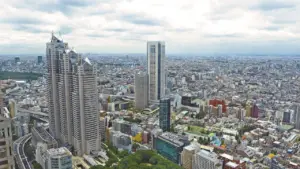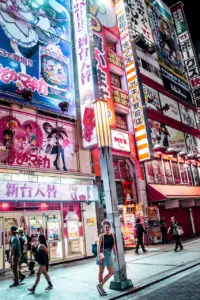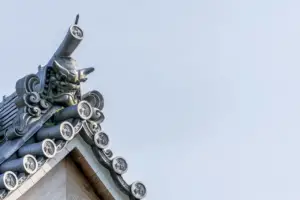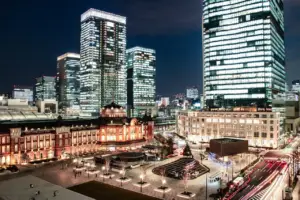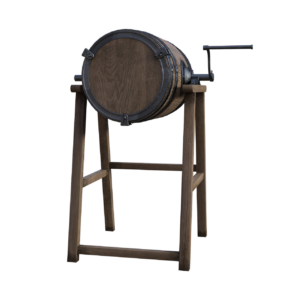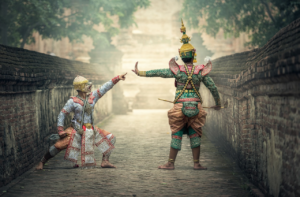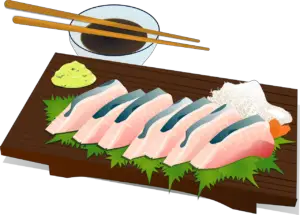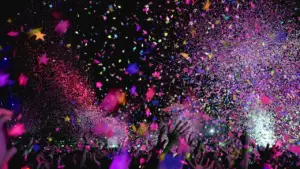If you’re looking to immerse yourself in traditional Japanese culture, Osaka is the perfect destination. Known for its sumo wrestling, bunraku puppetry, and delicious okonomiyaki, Osaka is a city rich in history and tradition.
Sumo wrestling, one of Japan’s most iconic sports, is deeply ingrained in Osaka’s culture. The city hosts the March Sumo Tournament, one of six major tournaments held throughout the year. The tournament attracts tens of thousands of spectators, who come to witness the intense and strategic sumo bouts between the world’s top sumo wrestlers.
But sumo wrestling isn’t just a sport it’s a way of life for many in Osaka. To truly understand the culture of sumo, you can explore the Sumo Museum or visit one of the many sumo stables scattered throughout the city.
Key Takeaways
- Sumo wrestling is a highly respected and revered form of sport deeply ingrained in Osaka’s culture that requires years of rigorous training and discipline.
- Bunraku puppetry is a unique art form that originated in Osaka during the Edo period and combines storytelling, music, and puppetry to retell classic Japanese tales with themes of love, tragedy, and revenge.
- Okonomiyaki, Osaka’s signature dish, is a savory pancake made from a batter of flour, eggs, grated yam, and shredded cabbage with various toppings that vary by region, often cooked right in front of the customer for a sensory experience.
- Osaka’s traditional culture is rich in history and tradition, centered around food, and offers a unique and captivating experience for visitors through its diverse range of art forms, including sumo, bunraku, and okonomiyaki.
Sumo Wrestling: A Deeply Ingrained Tradition
You can’t visit Osaka without experiencing the raw power and grace of sumo wrestling. It’s a tradition that’s deeply ingrained in the city’s culture. Sumo wrestlers are considered celebrities in Osaka, and their matches draw huge crowds of enthusiastic fans.
The sport has a rich history in Japan, dating back to ancient times when sumo wrestling was a way to entertain the gods. Today, it’s a highly respected and revered form of sport that requires years of rigorous training and discipline.
One of the best ways to witness the power and skill of sumo wrestling is during the March Sumo Tournament in Osaka. This annual event draws top-ranked sumo wrestlers from around the country to compete for the championship title. The tournament lasts for 15 days and takes place in the city’s sumo arena, the Edion Arena Osaka.
It’s an incredible spectacle to see these massive wrestlers face off against each other, using their strength and technique to try and push their opponent out of the ring. But sumo wrestling isn’t just about brute force, it’s also about strategy, timing, and mental focus.
The March Sumo Tournament is a must-see event for anyone visiting Osaka who wants to experience the city’s traditional culture.
The March Sumo Tournament in Osaka
Get ready to witness the excitement of the March Sumo Tournament with some of the strongest and most skilled wrestlers in the world! Held annually in Osaka, this tournament is one of the six major sumo competitions in Japan.
The tournament typically lasts for 15 days and features intense and strategic sumo bouts between wrestlers from various sumo stables.
The March Sumo Tournament in Osaka is not only a showcase of physical strength but also a display of Japanese tradition and culture. From the opening ceremony to the final match, the tournament is steeped in ritual and symbolism. Wrestlers wear traditional attire, and matches are often accompanied by traditional music and dance performances.
It’s an experience that you won’t forget, and it’s a great way to immerse yourself in Osaka’s rich culture and history. So get ready for intense and strategic sumo bouts that will leave you on the edge of your seat!
Intense and Strategic Sumo Bouts
Prepare to be amazed by the intense and strategic sumo bouts that will keep you on the edge of your seat! In the March Sumo Tournament in Osaka, you’ll witness some of the strongest and most skilled sumo wrestlers in Japan.
With their massive bodies and years of training, these athletes will battle it out in the ring with a combination of power, technique, and mental toughness. As the wrestlers enter the ring, you’ll feel the energy of the crowd rise and the tension build.
The wrestlers will start by performing a ritual known as shikiri, where they stomp their feet and glare at each other to intimidate their opponent. Once the match begins, you’ll see the wrestlers use a range of techniques to try and push each other out of the ring or force their opponent to touch the ground with any part of their body other than their feet.
With each move, you’ll see the wrestlers adjust their strategy and try to outmaneuver their opponent. It’s a thrilling experience that you won’t want to miss! As you watch the sumo bouts, you’ll gain an appreciation for the history and culture behind this traditional sport.
You may even want to delve deeper into this fascinating world by visiting the Sumo Museum. Here, you can explore the rich history of sumo wrestling, view ancient artifacts and memorabilia, and learn about the training and lifestyle of sumo wrestlers. It’s a great way to round out your experience of Osaka’s traditional culture.
The Sumo Museum: Exploring Sumo’s History and Culture
Step into the Sumo Museum and immerse yourself in the rich history and culture of Japan’s beloved sport. The museum, located in Ryogoku, Tokyo, is dedicated to preserving the legacy of sumo wrestling and educating visitors on the sport’s fascinating history. As you enter the museum, you will be greeted with a collection of artifacts, including ancient sumo scrolls, championship banners, and traditional sumo costumes.
One of the highlights of the museum is a 3D sumo ring where visitors can experience the intense atmosphere of a sumo tournament. The ring is surrounded by a 3-column and 4-row table that displays the different ranks of sumo wrestlers, their weight classes, and their associated fighting styles. The museum also features a video presentation that provides an overview of the sport’s history, rules, and traditions. Overall, the Sumo Museum is a must-visit destination for anyone interested in the fascinating world of sumo wrestling.
As you leave the museum, you can head to a sumo stable to witness the rigorous training and daily life of a sumo wrestler. These stables are where the wrestlers live and train, and visitors can observe their morning practice sessions and learn about their daily routines. The next subtopic will delve deeper into the world of sumo stables and provide a window into the life of a sumo wrestler.
Sumo Stables: A Window into the Life of a Sumo Wrestler
Entering a sumo stable feels like stepping into a different world, where you can witness the daily routines, training, and lifestyle of the wrestlers.
As you walk into the stable, you’ll immediately notice the intense heat and humidity inside the building. The stench of sweat and the sound of heavy breathing fill the air.
You’ll see the wrestlers, or rikishi, performing their daily rituals, such as stretching, squatting, and stomping on the floor to build their strength and endurance.
Observing the wrestlers’ training is a unique experience. You’ll witness their dedication, discipline, and determination to become the best in their field. They practice for hours, honing their skills, and pushing their bodies to the limit.
After observing the sumo wrestlers’ daily routine, you can transition into learning about bunraku puppetry, a unique art form that has been passed down for generations.
Bunraku Puppetry: A Unique Art Form
Witnessing the intricate movements and emotions conveyed by the lifelike bunraku puppets is a truly memorable experience. This traditional art form originated in Osaka during the Edo period and involves three puppeteers who manipulate a single puppet using strings and rods. The puppeteers wear black clothing and are visible to the audience, but their movements are minimal and do not detract from the focus on the puppet.
Bunraku performances often retell classic Japanese tales with themes of love, tragedy, and revenge. The puppets are incredibly detailed, with facial expressions that change to convey various emotions. The movements of the puppets are also intricate, with subtle gestures and movements that create a lifelike appearance. The combination of the puppeteers’ skill and the puppets’ realism make bunraku a unique and captivating art form that is a must-see for anyone visiting Osaka.
As you move on to the next topic, it’s worth noting that Osaka’s traditional culture isn’t just about sumo and bunraku. One of the city’s most famous dishes, okonomiyaki, is also an important part of its cultural heritage.
Okonomiyaki: Osaka’s Signature Dish
Indulging in this savory treat is like taking a bite out of a crispy, flavorful pancake loaded with a variety of delicious ingredients. Okonomiyaki, Osaka’s signature dish, is a type of savory pancake made from a batter of flour, eggs, grated yam, and shredded cabbage. The toppings vary depending on the region, but popular ingredients include pork belly, shrimp, squid, cheese, and green onion. Once cooked, the pancake is topped with a variety of sauces, such as Worcestershire sauce, mayonnaise, and bonito flakes.
One of the unique aspects of okonomiyaki is that it’s often cooked right in front of the customer at a teppanyaki-style grill. This allows the customer to see and smell the ingredients as they are being cooked, adding to the sensory experience. The dish is not only delicious, but it’s also a representation of Osaka’s love of food and communal dining.
Transitioning into the subsequent section about Osaka’s rich cultural heritage, it’s clear that food is a central aspect of the city’s traditions and customs. From the sumo wrestlers who eat chankonabe to the puppeteers who enjoy okonomiyaki after a performance, food is an integral part of Osaka’s cultural identity.
By immersing yourself in the city’s culinary scene, you can experience the richness and depth of Osaka’s traditional culture.
Immerse Yourself in Osaka’s Rich Cultural Heritage
Immersing yourself in the cultural heritage of this vibrant city is an experience that can’t be missed. Osaka is famous not only for its delicious okonomiyaki but also for its traditional culture, including sumo wrestling and bunraku puppetry. These art forms have been passed down from generation to generation and are deeply rooted in the city’s history and identity.
Sumo wrestling is a popular sport in Japan, and Osaka is one of the few cities in the country that hosts a professional sumo tournament every year. The tournament takes place in March and attracts a large number of locals and tourists alike. Watching the wrestlers in their massive bodies competing against each other is a sight to behold.
Similarly, bunraku puppetry originated in Osaka during the Edo period. It is a unique art form that combines storytelling, music, and puppetry. Visitors can watch a performance at the National Bunraku Theater and witness the intricate movements of the puppets, which are operated by three puppeteers each. These traditional art forms are an integral part of Osaka’s cultural heritage and offer visitors a glimpse into the city’s rich history and traditions.
Frequently Asked Questions
What is the origin of sumo wrestling and how has it evolved over time?
Sumo wrestling originated in Japan over 1,500 years ago, and has evolved over time to become the national sport of Japan. It is believed that sumo was originally performed as a ritual to please the gods, and it was later used as a form of entertainment for the aristocracy.
Today, sumo wrestling is a highly competitive sport that requires immense physical strength and endurance. The rules of the sport have remained largely unchanged over the centuries, with wrestlers trying to push their opponents out of a circular ring or force them to touch the ground with any part of their body other than the soles of their feet.
Sumo has become an integral part of Japanese culture, with many rituals and traditions associated with the sport.
How do sumo wrestlers train and prepare for tournaments?
To answer your question, sumo wrestlers train and prepare for tournaments in a highly regimented and disciplined manner.
First, they must maintain a strict diet to achieve and maintain their massive size and strength. They also engage in rigorous physical training, including weightlifting, cardio, and practicing sumo techniques.
Additionally, they participate in sparring matches with other wrestlers and receive coaching from experienced mentors. Mental preparation is also crucial, as they must maintain focus and concentration during tournaments, which can last for several days.
Overall, sumo wrestlers dedicate their entire lives to the sport, and their preparation for tournaments is a reflection of their commitment and dedication to their craft.
What is the role of the referee in a sumo match and how are matches judged?
In a sumo match, the referee, also known as a gyoji, plays a crucial role in ensuring fair play and maintaining order. The gyoji is responsible for starting and stopping the match, as well as enforcing the rules and regulations of sumo.
During the match, the gyoji observes the wrestlers closely, making sure they don’t commit any fouls or use illegal techniques. The gyoji also uses a variety of hand signals to communicate with the wrestlers and the judges, indicating who’s won the match and whether any penalties have been given.
Matches are judged based on a variety of factors, including which wrestler is the first to touch the ground with any part of their body other than the soles of their feet, which wrestler is forced out of the ring, and which wrestler has the most dominant position.
How has bunraku puppetry changed over the centuries and what themes does it typically explore?
Bunraku puppetry has undergone significant changes over the centuries, evolving from simple entertainment for the masses to a highly respected art form in Japan.
The puppets themselves have become more intricate and realistic, with the use of multiple puppeteers to control their movements.
The themes explored in Bunraku typically center around love, honor, and tragedy, often drawing from Japanese mythology and historical events.
The performances are accompanied by live music and chanting, adding to the dramatic effect.
Despite its long history, Bunraku continues to captivate audiences to this day, showcasing the enduring power of traditional Japanese art forms.
Can visitors participate in making their own okonomiyaki dish at local restaurants or cooking classes?
Yes, visitors can definitely participate in making their own okonomiyaki dish at local restaurants or cooking classes. Okonomiyaki is a popular dish in Osaka that is often called ‘Japanese pizza’and consists of a savory pancake filled with a variety of ingredients such as cabbage, meat, seafood, and noodles.
Many restaurants in Osaka offer the option for customers to make their own okonomiyaki dish right at their table, either with the help of a server or on their own griddle. Additionally, there are cooking classes available where visitors can learn how to make the dish from scratch and even take home the recipe to recreate it in their own kitchen.
Making your own okonomiyaki is a fun and interactive way to experience Osaka’s traditional cuisine and culture.
Conclusion
Now that you’ve explored Osaka’s traditional culture, you’re undoubtedly impressed by the depth and richness of its heritage. Sumo wrestling is a deeply ingrained tradition in Osaka. Its March tournament is a must-see experience for any visitor. The intense and strategic sumo bouts, coupled with the opportunity to explore the sumo museum and stables, offer a unique insight into the life of a sumo wrestler.
Bunraku puppetry is another unique art form that is a must-see in Osaka. The intricate and detailed puppets, along with the skilled manipulation by the puppeteers, is truly awe-inspiring.
And of course, no visit to Osaka is complete without indulging in its signature dish, okonomiyaki. The savory and satisfying pancake-like dish is a perfect representation of Osaka’s vibrant food culture.
Overall, immersing yourself in Osaka’s rich cultural heritage is an unforgettable experience. From sumo wrestling and bunraku puppetry to okonomiyaki and beyond, Osaka has something to offer for everyone. Whether you’re a history buff, foodie, or simply looking for a unique adventure, Osaka’s traditional culture is sure to leave a lasting impression.












